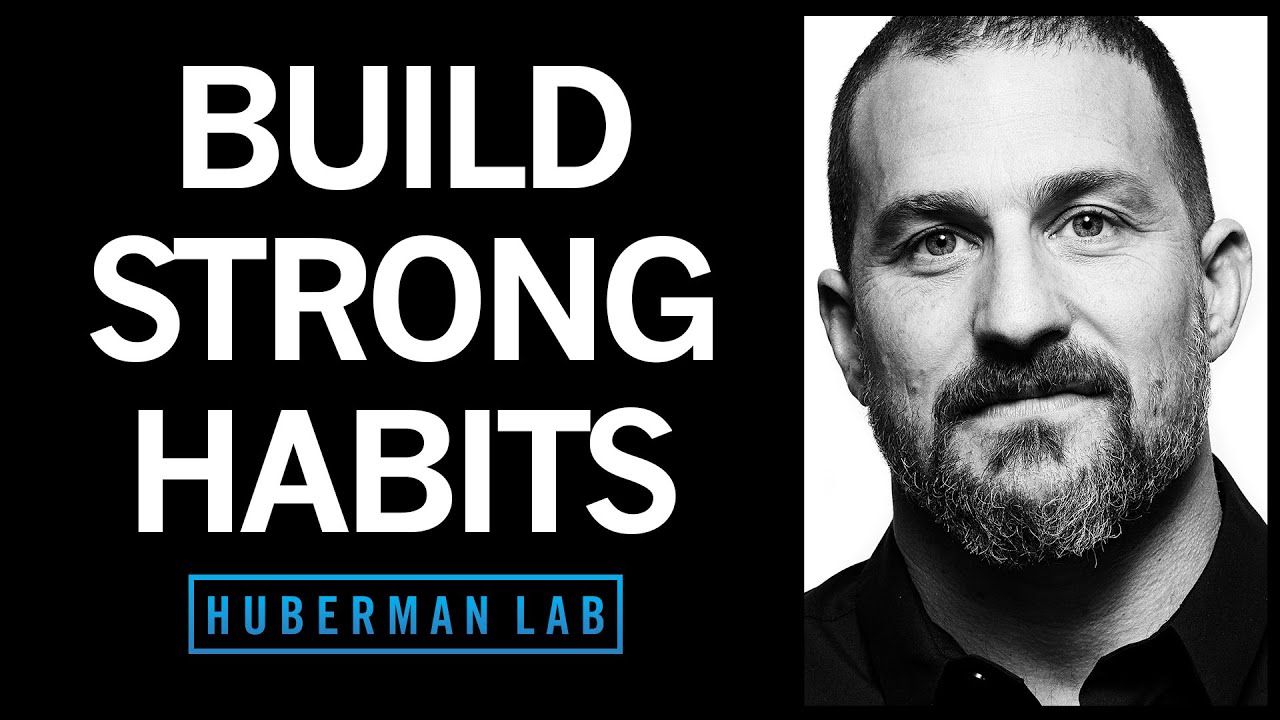Habits form through a process called conditioning, where behaviors become automatic with repetition. Building better habits involves understanding this process and creating positive routines.
Understanding the science behind habit formation can transform your life. Habits operate on a loop: cue, routine, and reward. The brain craves efficiency and automates repeated actions, making habits hard to break but also easy to form with the right strategies.
Identifying your triggers and rewards helps in designing better routines. Start small and be consistent to see lasting change. By focusing on positive cues and reinforcing rewards, you can build habits that enhance your well-being and productivity. This approach not only simplifies the process but also makes it sustainable in the long run.
Introduction To Habit Formation
Understanding the science behind habit formation can help you create better habits. Habits are routines or behaviors repeated regularly and tend to occur subconsciously. Learning how habits form allows you to change or create new ones effectively.
The Role Of Habits In Daily Life
Habits play a crucial role in our daily lives. They help us save time and energy. For example, brushing your teeth every morning is a habit. You do it without thinking, saving mental effort for other tasks.
Habits can be good or bad. Good habits, like exercising, improve your life. Bad habits, like smoking, can harm you. Identifying these habits is the first step in changing them.
Why Habits Matter
Habits shape our actions and decisions. They influence our health, happiness, and success. Building positive habits can lead to a better quality of life.
Here are a few reasons why habits matter:
- Efficiency: Habits make tasks automatic, freeing up mental resources.
- Consistency: Habits ensure we perform essential tasks regularly.
- Goal Achievement: Good habits help us reach our goals.
- Health: Healthy habits improve our physical and mental well-being.
Understanding the importance of habits can motivate you to develop better ones.

Credit: www.youtube.com
Neurological Basis Of Habits
Understanding the neurological basis of habits helps us build better habits. Habits form through a series of brain processes. These processes make actions automatic and routine over time. Let’s dive into the brain regions and neurotransmitters involved in habit formation.
Brain Regions Involved
The brain has specific regions that play key roles in habit formation. These regions work together to create and maintain habits.
- Basal Ganglia: This area is crucial for habit learning and memory. It helps in the automation of repetitive actions.
- Prefrontal Cortex: This region is involved in decision-making and planning. It helps in the initial stages of habit formation.
- Hippocampus: This part of the brain stores contextual information. It helps us remember where and when a habit occurs.
Neurotransmitters And Habit Formation
Neurotransmitters play a vital role in habit formation. They are chemicals that transmit signals in the brain.
Here are some key neurotransmitters involved:
- Dopamine: Dopamine is known as the “reward” neurotransmitter. It reinforces habits by providing a sense of pleasure.
- Serotonin: This neurotransmitter helps regulate mood. A balanced mood supports consistent habit formation.
- Acetylcholine: It is important for attention and learning. It helps in the initial learning of new habits.
Understanding these brain regions and neurotransmitters can help us build better habits. The more we know, the easier it is to create positive, lasting changes.
The Habit Loop
Understanding the habit loop is essential for building better habits. This loop consists of three key components: the cue, the routine, and the reward. By mastering these elements, you can form and maintain positive habits.
Cue
The cue is the trigger that initiates a habit. It can be a specific time of day, an emotion, or a particular situation. Identifying your cues helps you understand what starts your habits.
Routine
The routine is the action you take in response to the cue. This is the behavior you want to change or establish. Routines can be simple, like brushing your teeth, or complex, like a workout session.
Reward
The reward is the benefit you gain from the routine. It reinforces the habit loop, making you more likely to repeat the behavior. Rewards can be physical, emotional, or psychological.
Breaking Down The Loop
To create better habits, break down the habit loop:
- Identify the cue: What triggers the habit?
- Change the routine: Replace the old behavior with a new one.
- Ensure the reward: Make sure the new habit feels rewarding.
Here’s a simple table to summarize the habit loop:
| Component | Description |
|---|---|
| Cue | Trigger that starts the habit |
| Routine | Action taken in response to the cue |
| Reward | Benefit gained from the routine |

Credit: www.betterup.com
Common Myths About Habits
Building better habits can seem challenging. Many myths surround the process of habit formation. These myths can mislead and discourage people. Understanding the truth is essential for success.
Myth Of The 21-day Rule
Many believe a habit forms in 21 days. This myth started from a misinterpreted study. In reality, forming a habit varies for each person.
- Some habits take longer to form.
- 21 days is not a magic number.
- Consistency is key to habit formation.
Studies show it can take anywhere from 18 to 254 days. The average time is 66 days. The complexity of the habit affects the time needed. Simple habits may form quicker. Complex habits require more time and effort.
Reality Of Long-term Change
Long-term change requires patience. People often expect quick results. Real change happens over time with consistent effort.
- Start with small, manageable steps.
- Track your progress regularly.
- Stay committed, even when it’s hard.
Understanding the reality can help set realistic expectations. This leads to better results and sustainable habits. Remember, every small effort counts.
Here is a simple table to illustrate different times needed for habit formation:
| Habit Type | Average Time to Form |
|---|---|
| Simple Habit | 18-30 days |
| Moderate Habit | 31-90 days |
| Complex Habit | 91-254 days |
Building habits is a journey. Knowing the truth helps in this journey. Be patient and persistent. Good habits will follow.
Steps To Building Better Habits
Building better habits can transform your life. It starts with understanding the science behind habit formation. Let’s dive into the steps to building better habits.
Setting Clear Goals
Setting clear goals is the first step. Clear goals give you direction. They help you stay focused. Use the SMART criteria for setting goals.
- Specific: Your goal should be clear and specific.
- Measurable: Measure your progress.
- Achievable: Set a goal that is realistic.
- Relevant: Your goal should matter to you.
- Time-bound: Set a deadline for your goal.
Starting Small
Start small to avoid feeling overwhelmed. Small steps lead to big changes. Identify the smallest step you can take.
- Break down your goal into smaller tasks.
- Focus on one task at a time.
- Celebrate small wins to stay motivated.
Consistency is key. Make the small tasks a daily habit. Over time, these small tasks will turn into bigger habits.

Credit: www.amazon.com
Techniques To Sustain Habits
Building better habits can be challenging. But, using the right techniques can help. Let’s explore some effective methods to sustain these habits over time.
Tracking Progress
Tracking your progress is crucial. It helps you stay motivated and see improvements. Use a journal, app, or spreadsheet to record your daily actions.
- Write down each time you complete a habit.
- Review your progress at the end of each week.
- Identify patterns and areas for improvement.
Seeing your progress on paper or a screen makes a big difference. It’s a visual reminder of your commitment and growth.
Creating Accountability
Accountability keeps you on track. Share your goals with friends or family. They can support and encourage you.
| Method | Details |
|---|---|
| Buddy System | Pair up with a friend. Check in with each other daily. |
| Public Commitment | Announce your goals on social media. Update your progress regularly. |
| Join a Group | Find a community with similar goals. Share tips and experiences. |
Having someone to answer to can make a big difference. It adds an extra layer of commitment and motivation.
Overcoming Obstacles
Building better habits often involves facing many obstacles. These challenges can make it hard to stay on track. But with the right strategies, you can overcome these hurdles. Let’s explore ways to deal with setbacks and stay motivated.
Dealing With Setbacks
Setbacks are a normal part of the habit-building process. Everyone experiences them. The key is to not let them stop you. Here are some tips to handle setbacks:
- Acknowledge the setback but don’t dwell on it.
- Analyze what caused the setback.
- Adjust your plan to avoid future setbacks.
- Remember, setbacks are learning opportunities.
Use a journal to track your progress and setbacks. This helps you see patterns and make necessary adjustments.
Staying Motivated
Staying motivated is crucial for habit formation. Motivation can fluctuate, so it’s important to have strategies in place.
Consider these methods to boost your motivation:
- Set clear and achievable goals.
- Break goals into smaller steps.
- Celebrate small wins along the way.
- Find a support system or a habit buddy.
- Visualize the benefits of your new habit.
Keeping a positive mindset can greatly impact your motivation. Always remind yourself why you started.
Using these strategies can help you stay on track. Overcoming obstacles is possible with the right approach.
Real-life Examples
Understanding the science behind habit formation is crucial. Real-life examples make it more relatable. Learning from others can help you build better habits.
Success Stories
Many people have transformed their lives by building better habits. Here are some inspiring stories:
- James Clear: The author of “Atomic Habits” used small changes to improve his health and productivity.
- Jerry Seinfeld: The comedian wrote jokes every day, creating a habit that led to his success.
- Stephen King: The author writes 1,000 words daily, maintaining this habit for decades.
These success stories show that small, consistent actions can lead to big results.
Lessons Learned
From these examples, we can learn valuable lessons:
- Start Small: Begin with tiny changes. They are easier to maintain.
- Be Consistent: Consistency is key. Perform the habit daily.
- Track Progress: Keep a record of your habits. It helps you stay motivated.
- Make It Enjoyable: Find joy in the habit. It increases the chances of sticking to it.
These lessons can help you build and maintain better habits.
Conclusion
Building better habits is crucial for personal growth. Understanding the science behind habit formation helps achieve long-term success. Consistency and small changes lead to lasting improvements. Embrace the power of habits for a more productive and fulfilling life. Start today and witness the positive impact on your daily routine.

